Top 17 PaaS Providers of 2025
By Alex Carter on September 17, 2024
Cloud-based Platform as a Service (PaaS) solutions provide a streamlined approach to developing, deploying, and managing web applications. These platforms handle infrastructure requirements, enabling developers to dedicate their efforts to coding. Equipped with features such as automated scaling, built-in development tools, and enhanced security, PaaS minimizes operational challenges and increases efficiency in application management.
What Are PaaS Services?
Platform as a Service (PaaS) offers a cloud-based environment for building, testing, deploying, managing, and updating web applications. It includes features such as pre-configured templates for development, automatic scaling, efficient workload distribution, and flexible pay-per-use pricing for cost efficiency.
PaaS solutions enable businesses to oversee the entire application lifecycle within a unified platform without managing infrastructure components like storage, servers, software licenses, middleware, or containerization tools.
The Best PaaS Providers
1. AWS Elastic Beanstalk
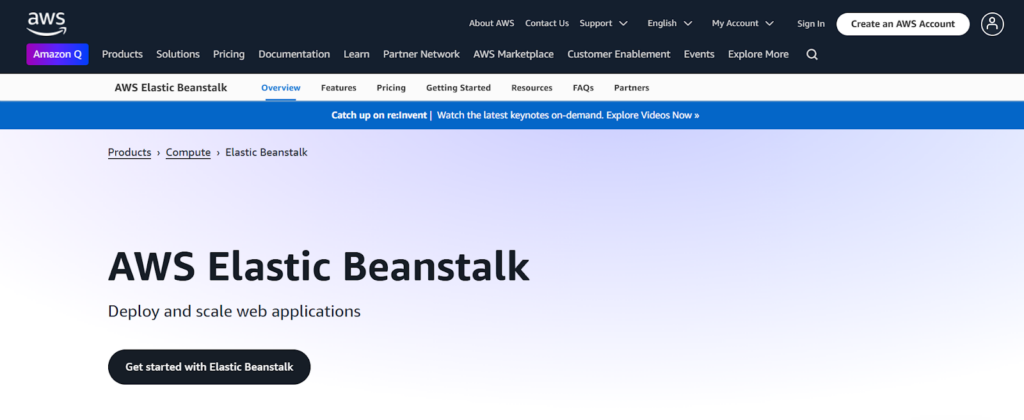
Pros:
✔ User-friendly interface
✔ Highly customizable
✔ Reliable infrastructure
Cons:
✖ Debugging and monitoring tools need improvement
AWS Elastic Beanstalk is a Platform as a Service (PaaS) offering from Amazon Web Services, the world’s largest cloud computing provider. With a network of over 200 data centers, AWS provides a reliable and scalable infrastructure for deploying applications.
The platform simplifies the process of developing and deploying web applications by managing the underlying infrastructure. The AWS Management Console is designed for ease of use, making it accessible even for those with limited experience in cloud-based deployment. As application needs grow, the platform supports scaling and resource upgrades without causing disruptions.
Elastic Beanstalk follows a pay-as-you-go pricing structure, where users are charged only for the AWS resources their applications consume, such as EC2 instances and S3 storage. This model helps keep costs affordable for smaller applications, but as traffic and resource usage grow, expenses can rise considerably.
AWS guarantees 99.99% uptime, ensuring reliability. Understanding what 99 uptime means helps in evaluating service availability, as it translates to minimal downtime over a given period. However, debugging and monitoring features are not as intuitive, which may create challenges for developers in troubleshooting application performance.
2. Microsoft Azure App Service
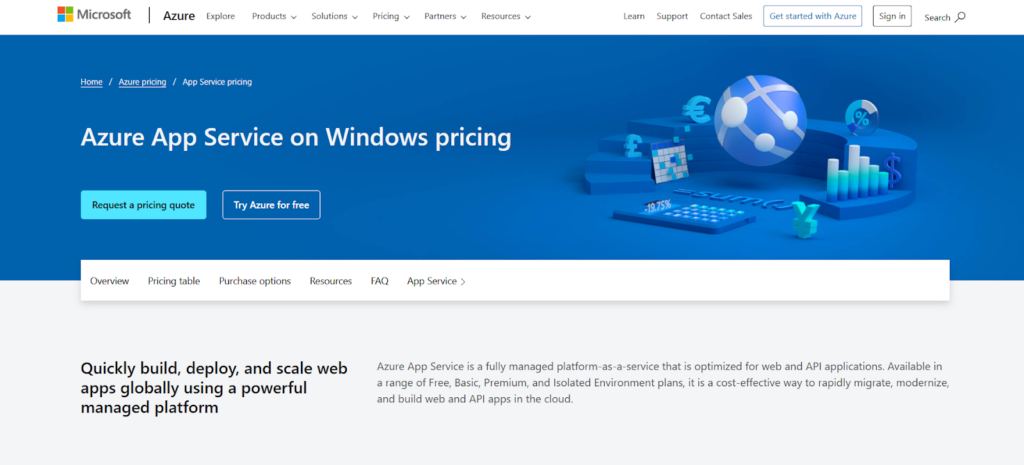
Pros:
✔ Strong security features
✔ Scalable for various business needs
✔ Cost-effective for small to mid-sized applications
Cons:
✖ Complex interface
✖ Complicated pricing structure
One cloud-based platform for creating and implementing apps on web and mobile platforms is Microsoft Azure App Service. With support for Python, Java, Node.js,.NET, and Core, among other programming languages, it provides versatility for a range of development requirements.
A key strength of Azure App Service is its security framework. The platform adheres to strict compliance regulations such as SOC and PCI, with Microsoft’s extensive cybersecurity team ensuring continuous protection and risk management.
With a global network of over 200 data centers, Azure provides high availability and reduced downtime. However, its interface can be challenging to navigate, particularly for those unfamiliar with the platform. Additionally, its pricing model can be difficult to interpret, making cost estimation for long-term usage more complex.
3. Google App Engine
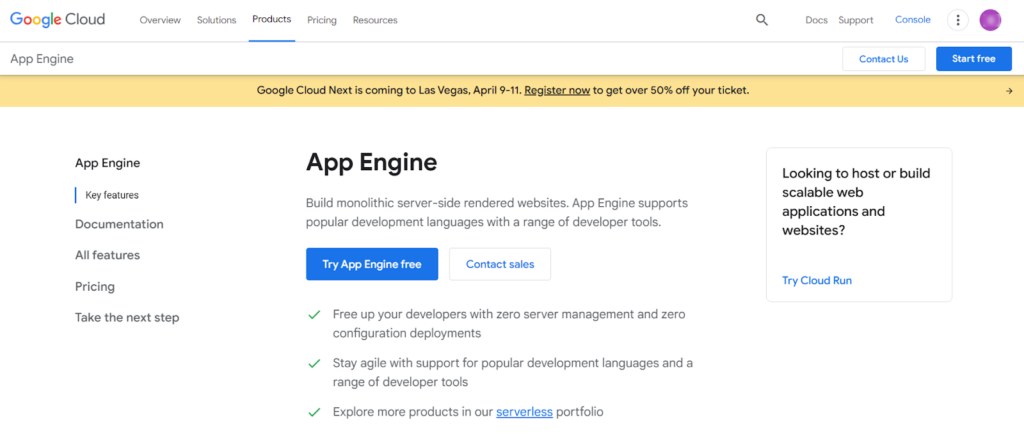
Pros:
✔ No need to manage servers or infrastructure
✔ Simplifies scaling for growing applications
✔ Free usage available up to a certain resource limit
Cons:
✖ Limited access to the filesystem (read-only for developers)
✖ Can only execute code triggered by HTTP requests, except for scheduled tasks
✖ Restrictions on third-party modules (C and Pyrex not supported for Python)
✖ Java applications have limited access to standard JRE classes and cannot create new threads
Google App Engine is a serverless, fully managed platform that enables organizations to develop and deploy applications without the need for infrastructure management. It is compatible with multiple programming languages, including Node.js, Ruby, Java, C#, Go, Python, and PHP, while also supporting additional languages and frameworks through containerization.
The platform is designed for automatic resource scaling, adjusting capacity based on application demand without requiring manual adjustments. While it provides a flexible development environment, some limitations exist, such as restricted filesystem access and execution constraints, which may impact more advanced use cases.
4. Heroku
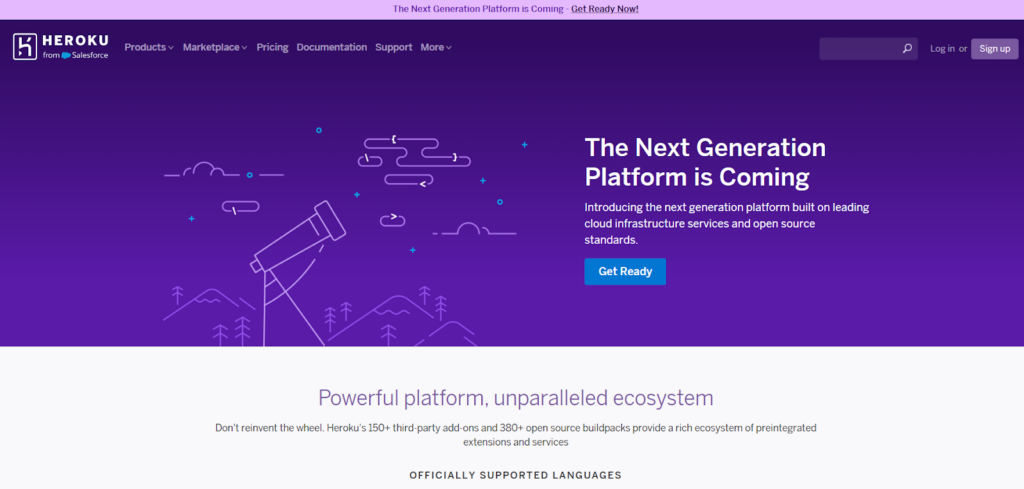
Pros:
✔ Intuitive and user-friendly interface
✔ Supports multiple programming languages
Cons:
✖ Becomes expensive as traffic increases
Heroku is a cloud-based PaaS designed for developers who want a straightforward platform for building and deploying web applications. It takes care of infrastructure management, allowing developers to focus entirely on writing and deploying code.
The platform supports various programming languages, including Ruby, Java, PHP, Python, Scala, Clojure, and Go. Additional support is available through third-party Buildpacks, making it a versatile option for different development needs.
One of Heroku’s standout features is its simplicity. Developers can launch new servers in seconds using basic command-line inputs, making deployment efficient. However, while Heroku is affordable for small applications, costs rise significantly for high-traffic projects, making it less practical for large-scale deployments.
5. DigitalOcean App Platform
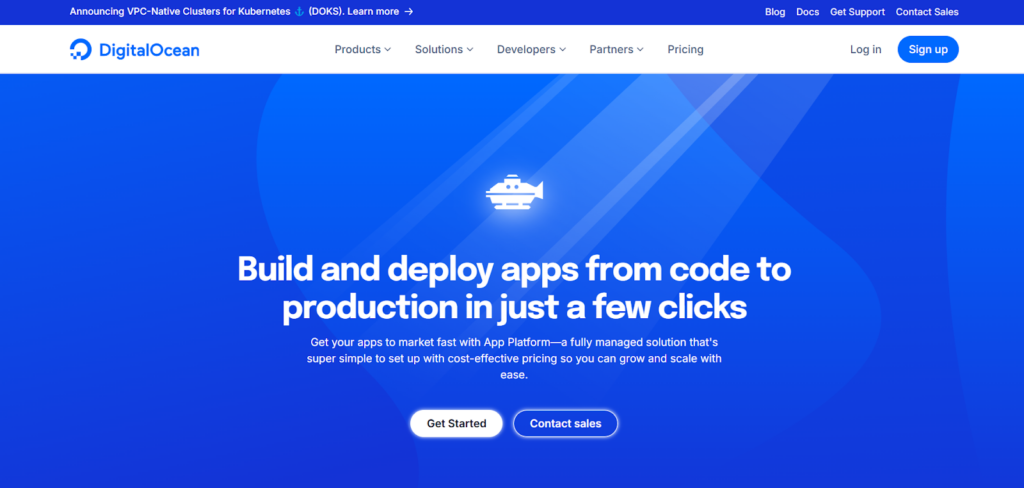
Pros:
✔ Affordable pricing compared to larger providers
✔ Easy-to-use interface
Cons:
✖ Limited features compared to major competitors
DigitalOcean App Platform is an affordable PaaS solution tailored for developers looking for a straightforward, managed deployment process. As a lower-cost alternative to major providers like AWS, Azure, and Google Cloud, it is well-suited for small to mid-sized projects that do not need complex infrastructure.
This platform supports several programming languages, including Python, Node.js, PHP, Ruby, and Go. For applications built with other languages, developers can deploy them using a Container Image, ensuring broader compatibility.
App Platform includes automatic security features such as SSL certificate renewal and DDoS protection, reducing maintenance requirements. Users can choose between shared and dedicated CPUs, with pricing starting at $5 per month. However, its feature set is more limited than larger cloud platforms, making it less suitable for complex applications.
6. Engine Yard
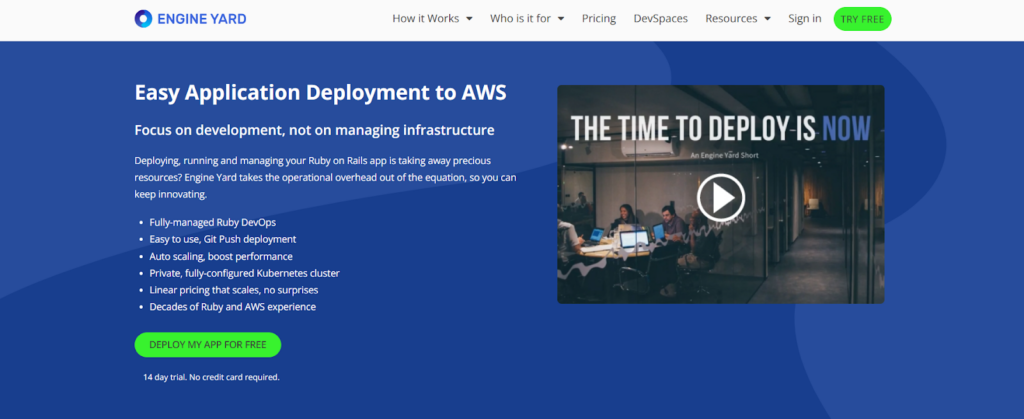
Pros:
✔ Multi-cloud support for flexible hosting
✔ 24/7 customer support
✔ Simple application deployment
Cons:
✖ Custom styling requires knowledge of CSS
✖ Limited customization options
Engine Yard is a managed DevOps platform that simplifies cloud-based application hosting. While it specializes in Ruby on Rails, it also supports Node.js, Python, PHP, and Java. The platform is built on AWS and manages various infrastructure-related complexities, allowing developers to focus on coding.
Beyond Kubernetes management, Engine Yard provides additional services such as automated backups, restoration, and scalable application hosting based on performance needs. Hosted applications integrate with Grafana for basic resource monitoring, and the platform includes automated alerts for potential failures.
Despite its strengths, customization options are somewhat limited, particularly for styling without CSS knowledge. While it offers strong support and ease of deployment, businesses with advanced customization needs may find it less flexible than other solutions.
7. IBM Cloud
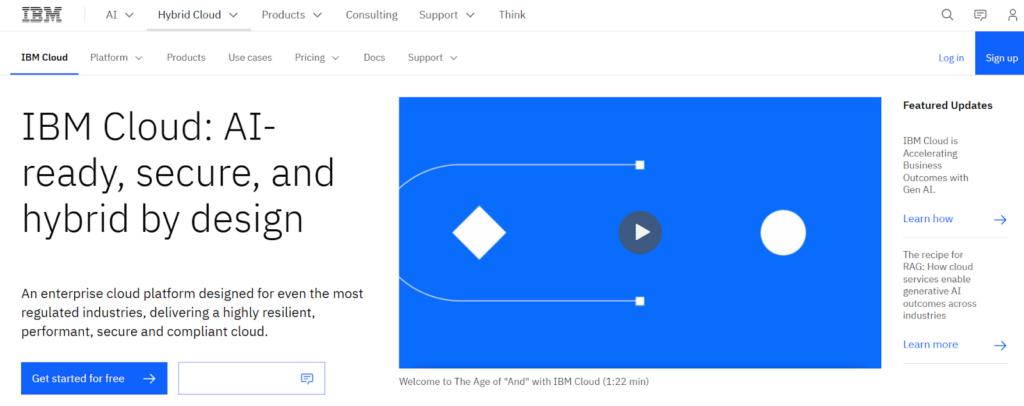
Pros:
✔ Strong data management and security, reducing server maintenance efforts
✔ Easy deployment and centralized resource management for businesses of all sizes
✔ Reliable collaboration tools for file sharing and conference calls
✔ High-security data migration improves efficiency and supports client communication
Cons:
✖ Higher cost, especially for large-scale deployments
✖ Limited integration with external services may reduce platform flexibility
✖ Log viewing for Java apps is only available through the web console, which some find inefficient
✖ Occasional data transfer issues during peak usage hours
✖ Troubleshooting can be challenging, leading to delays in issue resolution
IBM Cloud offers both PaaS and IaaS solutions, competing with providers like AWS and Azure. Its primary PaaS options include IBM Red Hat OpenShift on IBM Cloud, a platform for developing cloud-native applications with automated workload provisioning and scaling.
IBM Cloud Pak for Applications, another PaaS solution, was designed to help organizations modernize legacy applications. While it has been deprecated, businesses can still access its capabilities through OpenShift on IBM Cloud. Despite its strong security and collaboration tools, IBM Cloud’s higher cost and integration limitations may be concerns for some users.
8. Mendix aPaaS
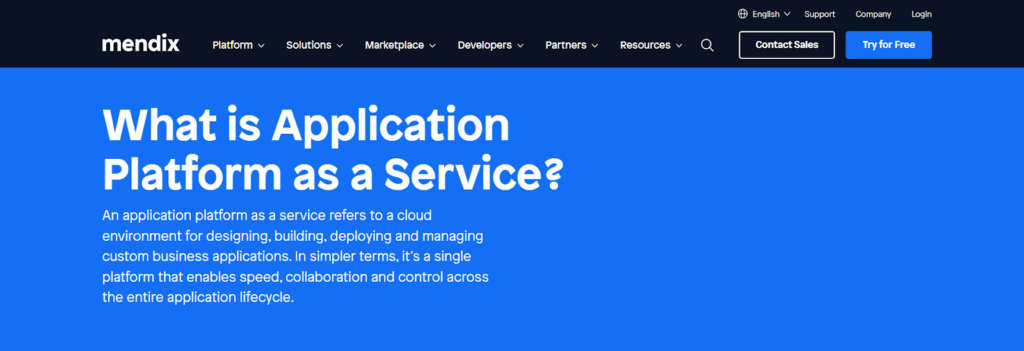
Pros:
✔ Real-time monitoring helps identify and resolve issues quickly
✔ Built-in security features ensure data protection
✔ Supports data governance and compliance requirements
Cons:
✖ Customizing pages or forms can be challenging
✖ Documentation and community support need improvement
Mendix aPaaS simplifies application deployment with single-click functionality while offering flexibility across public clouds, private clouds, and on-premises setups. Unlike many PaaS solutions that focus primarily on deployment, Mendix also accelerates development by providing reusable application components, reducing the need for coding from scratch.
As a low-code platform, it features a visual development interface designed for iterative app building, making it easier for teams to develop and refine applications efficiently.
9. Red Hat OpenShift
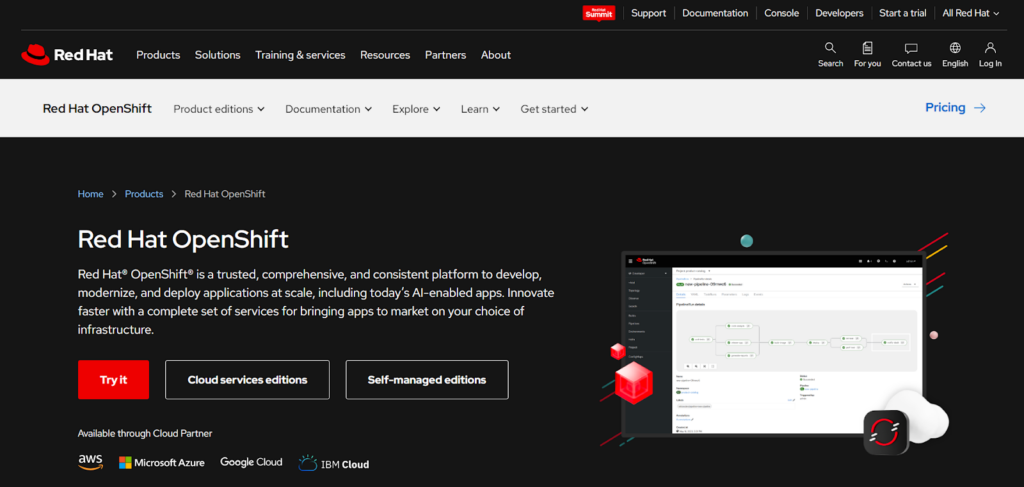
Pros:
✔ Strong security features, including role-based access and default secure settings
✔ Supports multiple programming languages and integrates with CI/CD tools like Jenkins
✔ Automation capabilities, such as auto-scaling and self-healing, reduce manual intervention
✔ Kubernetes-based scalability efficiently handles increased workloads
✔ Enhances DevOps workflows by optimizing CI/CD and reducing infrastructure management
Cons:
✖ Limited support for legacy applications and Bitbucket repositories
✖ Security and credential management could be improved
✖ Technical support and documentation need better clarity
✖ Integration with public and hybrid cloud platforms requires further development
✖ High cost and complex infrastructure may be challenging for new users
Red Hat OpenShift is a Kubernetes-based PaaS that automates container management and speeds up application deployment. Its source-to-image capabilities allow developers to convert application code directly into containers.
The platform features a user-friendly management console for overseeing multiple Kubernetes clusters and maintaining consistency across different operating systems. While OpenShift is highly effective for DevOps teams, its complexity, high cost, and limited legacy application support may pose challenges for some organizations.
10. VMware Tanzu Platform

Pros:
✔ Highly scalable, making it suitable for large enterprise environments
✔ Enables rapid application development and deployment
✔ Effective integration with Kubernetes for efficient container management
✔ Strong monitoring and analytics capabilities for performance tracking
✔ Supports multi-cloud and hybrid cloud environments for greater flexibility
Cons:
✖ Limited documentation and support can make troubleshooting difficult
✖ Steep learning curve for new users
✖ High resource consumption may impact efficiency
✖ Compatibility issues with existing infrastructure can create integration challenges
✖ Complex configuration and deployment require advanced expertise
VMware Tanzu Platform is a cloud-native application development suite designed for multi-cloud and hybrid cloud deployments. It enables developers to build and deploy applications quickly while leveraging Kubernetes for container management.
The platform includes automation features for provisioning, deployment, and monitoring, helping teams optimize workflows. Tanzu also offers tools for security, policy enforcement, and vulnerability scanning. However, its complex setup, high resource consumption, and compatibility limitations may require significant expertise to implement effectively.
11. Wasabi Cloud Storage
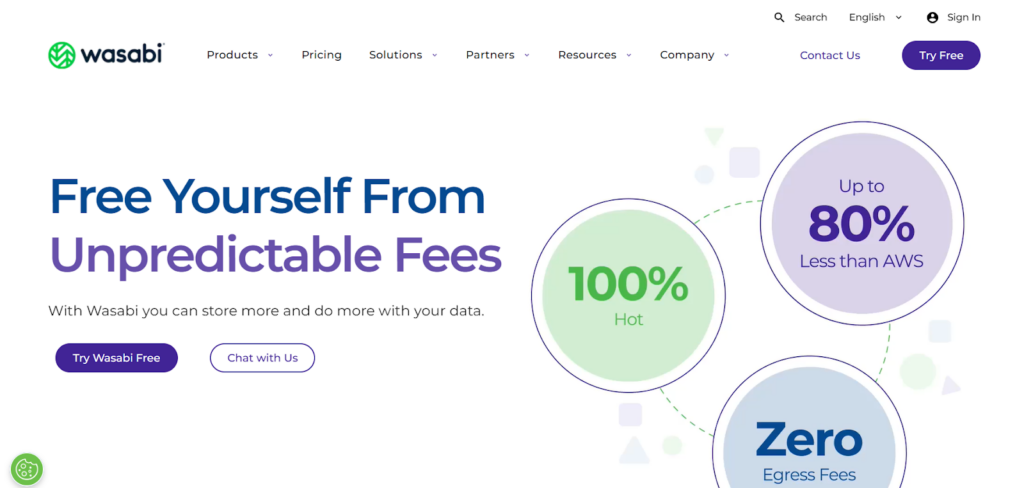
Pros:
✔ Cost-effective hot object storage
✔ Compatible with AWS S3, Azure, and Google Cloud storage
✔ Free outbound data transfer (egress) and API requests
Cons:
✖ Limited global coverage
✖ Limited range of tools
✖ Primarily focused on hot storage
Wasabi provides cloud storage services but is not classified as a PaaS platform. However, it can be integrated into PaaS workflows as a cost-effective storage option. While PaaS solutions manage infrastructure for application deployment, data storage remains a separate requirement. Wasabi offers an alternative to storing data within the same cloud that hosts an application by providing AWS S3-compatible storage at a lower cost.
With direct, high-speed connectivity to AWS, Azure, and Google Cloud, Wasabi enables applications hosted on hyperscale clouds to store data on a more affordable storage solution. Despite its competitive pricing, the platform’s global coverage and toolset remain limited.
12. Heirloom Computing
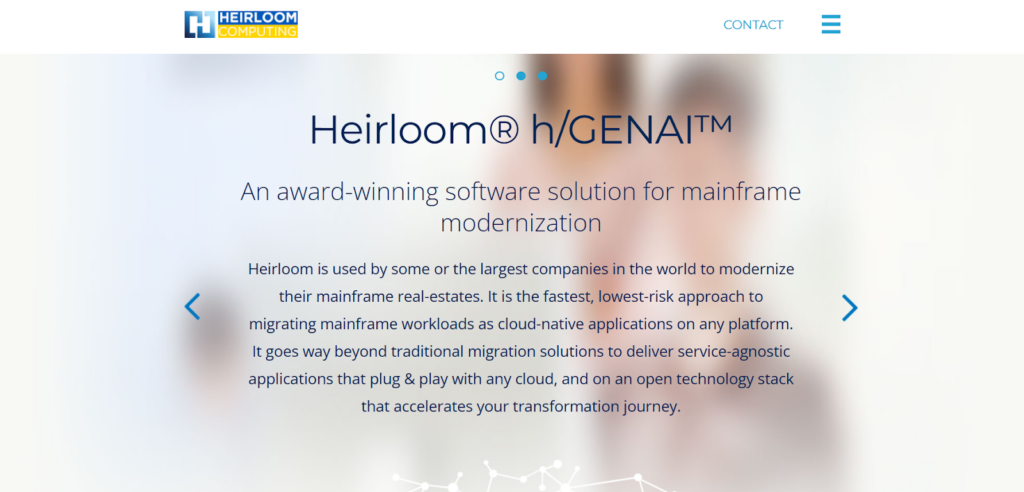
Pros:
✔ Accelerates re-platforming of legacy applications
✔ Provides strong application agility for cloud transformation
✔ Offers low-risk migration solutions
Cons:
✖ Limited documentation availability
✖ Some features require technical expertise
Heirloom Computing specializes in modernizing legacy applications by transforming them into cloud-native solutions while preserving existing data and functionality. The platform offers migration tools designed to support cloud transformation and adapt applications for modern environments.
Heirloom Computing uses compiler-based technology to migrate large mainframe applications rapidly. It runs on a Java Virtual Machine (JVM) to maintain compatibility with legacy applications while enabling deployment across various cloud environments. The platform also supports bimodal development, allowing organizations to retain original application code.
While Heirloom Computing collaborates with major partners, including AWS, Cognizant, CGI, Dell, and Google Cloud, its documentation and community support are limited, and certain features may require technical expertise for implementation.
13. Acquia Cloud Platform
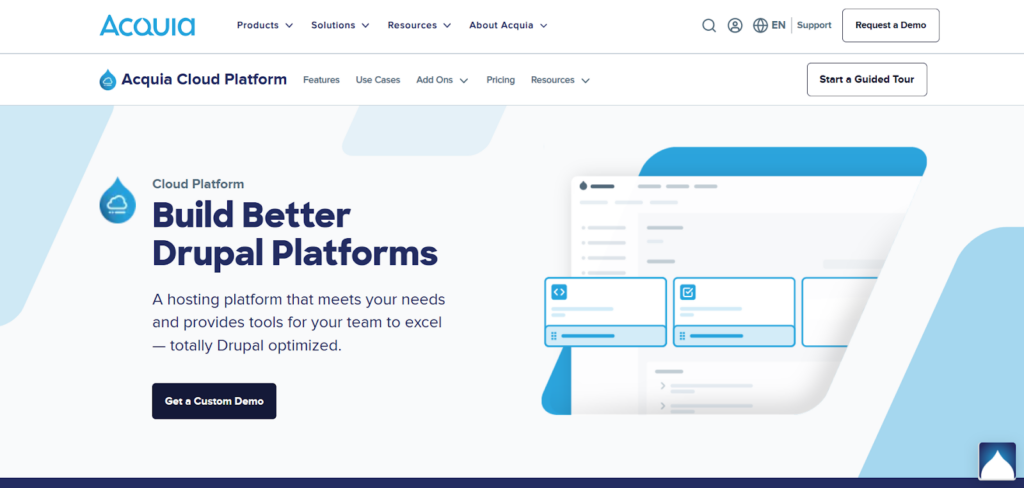
Pros:
✔ Compliant with PCI, HIPAA, and SOC 1 & 2 standards
✔ Expert support and training tailored for Drupal
✔ Disaster recovery services for business continuity
Cons:
✖ Higher cost compared to similar solutions
✖ Multi-site structure may be complex to manage
Acquia Cloud Platform is designed for hosting and managing web applications, with a focus on Drupal-based development. It provides an integrated set of tools for developers, site builders, and content managers, offering enhanced security, scalability, and reliability.
The platform includes DevOps integration, application monitoring, automated backups, workflow management, and role-based site access control. Its Content Delivery Network (CDN) ensures fast content delivery across different regions, while a global load balancer optimizes performance under varying traffic loads.
Acquia supports various integrations, including Salesforce, Zendesk, Shopify, MailChimp, and Adobe Analytics, along with API-based custom integration options. While it offers robust enterprise-grade features, the cost of the platform is higher than comparable solutions, and its multi-site management structure may require additional expertise.
14. Oracle Cloud Infrastructure
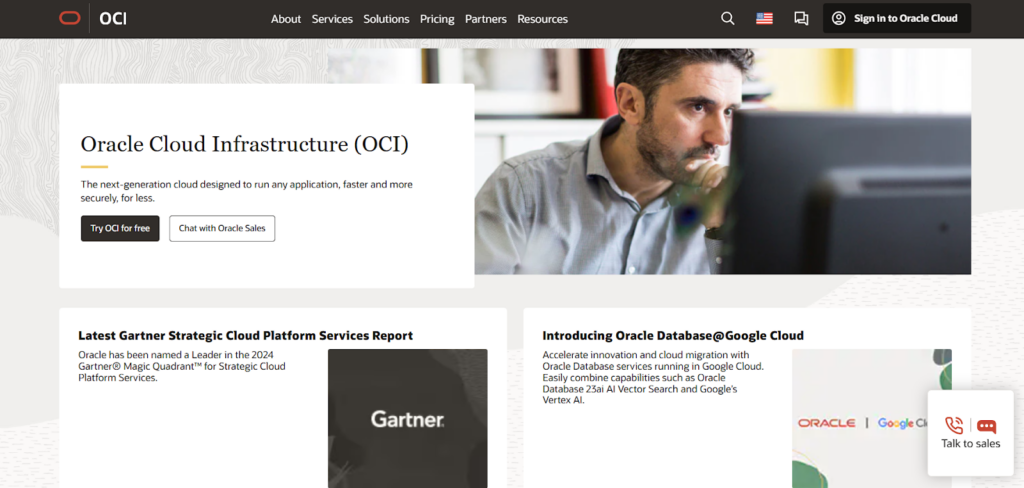
Pros:
✔ Easy to set up and start using
✔ Provides strong customer support
✔ Offers isolated network virtualization for self-service
Cons:
✖ Higher costs compared to other providers
✖ Configuration can be complex
Oracle Cloud Infrastructure (OCI) delivers cloud computing services for building and running applications in a high-performance computing environment with secure storage. It provides a broad range of capabilities, including analytics, databases, AI, business intelligence, data lakes, and government cloud solutions that meet FEDRAMP compliance standards.
OCI is designed to ensure high data availability, reducing failures and minimizing downtime. Key features include bare metal and virtual machine computing, vulnerability audits for identifying security risks, and automated CI/CD pipelines for optimizing application development.
OCI integrates with widely used tools such as Grafana for monitoring, Slack for communication, GitLab for CI/CD pipeline management, and Terraform for infrastructure as code deployment.
15. Dokku
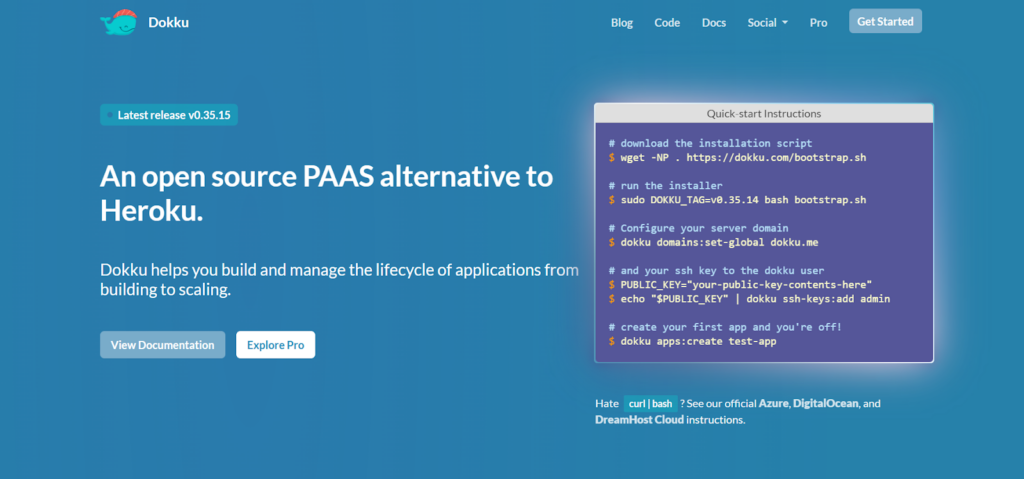
Pros:
✔ Comprehensive documentation for ease of use
✔ Active Slack and Discord community for support
✔ Simple setup and deployment
Cons:
✖ Limited customer support options
✖ Requires ongoing updates and maintenance
Dokku is an open-source PaaS designed as a lightweight alternative to Heroku. It enables application deployment and management using Docker containers, providing flexibility without vendor lock-in.
The platform automates application deployment via git push, ensuring efficient scaling and data security with SSL encryption. Horizontal scaling capabilities distribute traffic across multiple servers to enhance performance.
Dokku supports build packs for running applications consistently and allows for zero-downtime deployments using containerization. While it lacks native integrations, it offers official plugins for CouchDB, Elasticsearch, Grafana, MariaDB, MongoDB, MySQL, Redis, and HTTP authentication.
Key Factors to Consider When Selecting a PaaS Provider
- Programming Language Support: A PaaS provider should support multiple programming languages, allowing flexibility in development. Compatibility with commonly used languages such as Java, JavaScript, C++, Perl, PHP, and Ruby ensures broader application possibilities;
- Framework Compatibility: Frameworks provide the structure needed to develop applications efficiently. A provider should support popular frameworks such as Ruby on Rails for Ruby, Django for Python, and Laravel for PHP to simplify the development process;
- Scalability: A PaaS platform should support efficient scalability to accommodate growing data and user demands. The ability to expand resources without compromising performance is essential for maintaining efficiency;
- Run-Time Environment Support: The run-time environment (RTE) determines how applications execute within a platform. Support for multiple environments, such as Apache Tomcat, Jetty, and IIS, allows greater flexibility in deployment;
- Cost Considerations: Long-term affordability is a crucial factor in selecting a PaaS provider. Reviewing pricing models, identifying hidden costs, and ensuring budget alignment can help in making a cost-effective decision.
Essential Features of a PaaS Provider
- Web-Based Development Interface: A PaaS platform should include a browser-based development interface that allows real-time coding and deployment. Immediate feedback on changes helps improve the development process;
- Monitoring and Analytics: Built-in analytics should provide insights into resource usage, helping optimize performance and costs. A clear breakdown of resource consumption allows for better budget management and efficiency;
- Database Management: A PaaS provider should offer integrated database solutions to store, configure, and optimize application data. Efficient database management ensures smooth application performance;
- Middleware Support: Middleware acts as a bridge between the operating system and applications, enabling communication and data exchange. Support for web servers, content management systems, APIs, and data integration tools simplifies development and reduces manual configuration.
Conclusion
Selecting the right PaaS provider depends on various factors, including programming language support, scalability, cost, and integration capabilities. Each platform offers unique advantages, from fully managed solutions to flexible container-based options. Businesses should assess their development needs, security requirements, and budget constraints to determine the best fit. With the increasing demand for cloud-based applications, a well-chosen PaaS solution can improve efficiency, simplify deployment, and support long-term growth.
Posted in blog, Web Applications
Alex Carter
Alex Carter is a cybersecurity enthusiast and tech writer with a passion for online privacy, website performance, and digital security. With years of experience in web monitoring and threat prevention, Alex simplifies complex topics to help businesses and developers safeguard their online presence. When not exploring the latest in cybersecurity, Alex enjoys testing new tech tools and sharing insights on best practices for a secure web.
